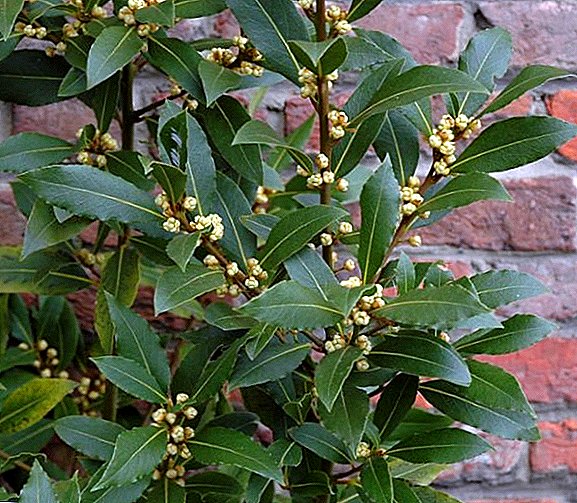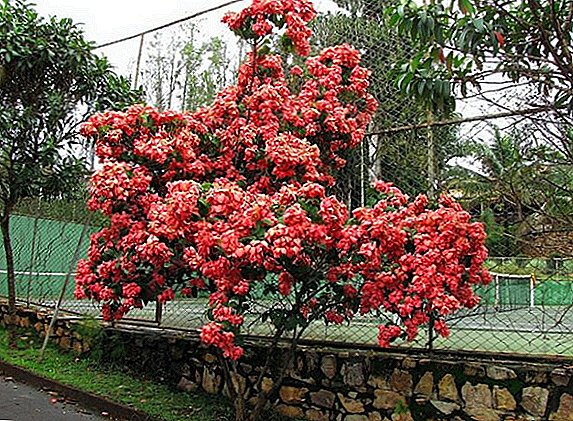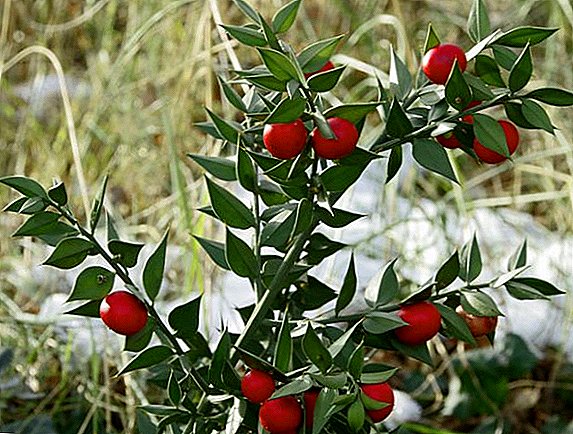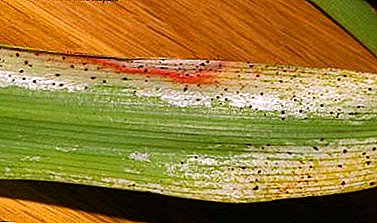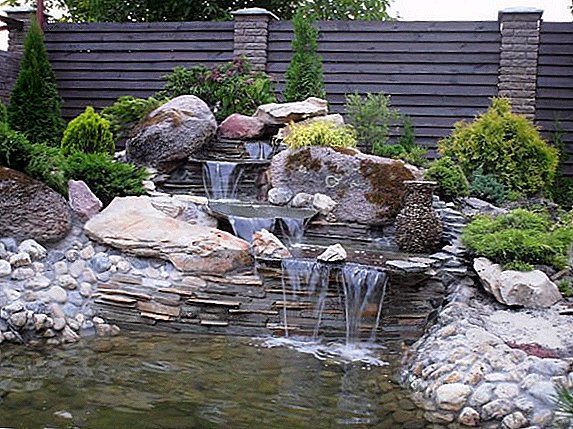 The dream of many cottage owners or a private house is a lake with a waterfall. Such a decoration immediately transforms and revives the site, adds raisins, and refreshes on hot summer days. Decorative waterfall can be quite small and fit even in a limited area. Its construction is actually simpler than it may seem: in order to create a construction with our own hands, you will need to buy some building materials and exactly follow the recommendations given by us.
The dream of many cottage owners or a private house is a lake with a waterfall. Such a decoration immediately transforms and revives the site, adds raisins, and refreshes on hot summer days. Decorative waterfall can be quite small and fit even in a limited area. Its construction is actually simpler than it may seem: in order to create a construction with our own hands, you will need to buy some building materials and exactly follow the recommendations given by us.
Waterfall location
Initially, it is necessary to determine the location of the structure, since the correct choice of location determines the service life and ease of care for the waterfall. In addition, the waterfall, located in a good location, harmonizes the entire area.  Places to avoid building:
Places to avoid building:
- near the house or other structures. Close proximity to water can lead to the spread of fungi on the walls of a building as a result of moisture evaporation;
- directly under the trees. In the autumn, the care of the waterfall can be complicated due to the fall of the foliage. In addition, the sun will not fall on it. The root system of trees can destroy a structure under the ground;
- in distant parts of the garden, in thickets. The waterfall will be difficult to notice, it will lose its decorative value.
The hands can also make gabions, rockeries, ladybugs, verandas, cellars, garden fencing, solar wax refinery, barbeque, gazebo and garden swing.If you populate the pond with plants and fish, the hot water will be too poor for oxygen for them. This decor will look organically near the bushes and flower beds. The waterfall can be both the main decorative accent, and an additional decoration in the composition of the garden. If in doubt about the location of the decor, it is better to consult with the landscape designer, because the design should be pleasing to the eye for many years.
 So, what to consider when choosing a place:
So, what to consider when choosing a place:- The presence of the slope.
- The presence of shade at lunchtime (from the fence, gazebo, house or tree).
- Free access to the waterfall from three sides.
- The integrity of the composition when the waterfall is turned on and off.
Important! Take into account that the waterfall should look harmoniously in the territory both in the operating mode and after disconnection.
Necessary materials
In the process, you will need the following materials:
- for marking: pegs and thread (can be replaced with whitewash);
- shovel;
- river sand and fine gravel;
- waterproofing film or finished plastic (concrete) tank structure;
- river stones, smooth stones;
- cement, polyurethane foam;
- pump;
- hoses;
- filter for the pump, the system of protection against dry running;
- decorative land and underwater plants.

The depth and shape of the waterfall bowl
When building a waterfall is important to think about how to equip the bowl. There are three possible options:
- Stone concrete bowl with full waterproofing. This option is considered to be labor-intensive, difficult to implement and outdated. It was used before the invention of other ways of arranging artificial ponds.
- Flexible insulation. Provides for the use of durable film for making the pit.
- Hard insulation. Means the use of the finished form of composite or plastic.
Important! The depth of the bowl depends on your preferences and intentions: if you want to populate the tank with fish, to land the underwater plants, the bowl must be at least 120 cm deep. If the purpose of the building is exclusively decorative, it can be limited to a shallow bowl up to 80 cm.Consider in more detail the second and third options. With large-scale construction (more than 10 sq. M.), You can choose a film coating, and, the deeper the reservoir, the stronger and thicker the film should be.
Learn how to choose a lawn mower, pumping station, a dry closet, a gasoline trimmer and a mini-tractor to give.The thickness of the film depends on the depth:
- up to 1 m - 0.8 mm;
- up to 1.5 m - 1.2 mm;
- deeper than 1.5 m - 1.5 mm and more.
 Choosing a bowl, focus on those that are equipped with recesses and terraces for plants. Keep in mind that in shallow containers (up to 80-100 cm) in severe frosts the water will freeze completely, therefore, in the presence of plants, they will need to be removed for the winter period. The shape of the pond depends entirely on your tastes. For greater naturalness and harmony, it may have an irregular shape, with twists and convolutions. But with too complex shape, the design can be difficult to maintain.
Choosing a bowl, focus on those that are equipped with recesses and terraces for plants. Keep in mind that in shallow containers (up to 80-100 cm) in severe frosts the water will freeze completely, therefore, in the presence of plants, they will need to be removed for the winter period. The shape of the pond depends entirely on your tastes. For greater naturalness and harmony, it may have an irregular shape, with twists and convolutions. But with too complex shape, the design can be difficult to maintain.We equip the foundation of the pit
When you have decided on the location, shape and size of the structure, you can proceed to the arrangement of the pit. First you need to clear the territory, removing the leaves, branches, stones. Next you need with the help of pegs and rope or whitewash to outline the perimeter of the future pond. Now you can proceed directly to digging the pit.
Pick up annual and perennial curb flowers, and ornamental shrubs to give.During the digging process, you will notice that the walls of the recess collapse a little and the earth crumbles, which is normal. To strengthen the walls, they should be periodically watered and clapped with the palm, as if stamping. In the process of digging, reaching the desired depth, it is worth making a mark and dig another 10-15 cm of earth. At the bottom is laid flat and dense layer of river sand, which will serve as a pillow.
Did you know? In nature, the noise of waterfalls plays a huge role: it is a guide for migratory birds. The noise has a calming effect on a person, it helps to overcome stress and anxiety. The power of the noise of large waterfalls is impressive: during the day it spreads over 2 km, and at night around 7 km!
Cascades
An artificial reservoir in the garden can be both with a waterfall and with cascades. If you do not know which option to choose, consider the advantages and disadvantages of both design methods.
- The waterfall is formed with a significant difference in height, while the water flows down with a powerful, direct stream with a noise, breaks against the stones, forming splashes and foam. It looks spectacular, but under the constant strong influence of water stones can quickly collapse. To create a separate water streams need to use a stone with uneven. jagged edges.
- The cascade is formed with the help of several protrusions on different tiers of the structure, along which water quietly and smoothly flows down with a pleasant murmur. Contemplation of cascades fills with tranquility, pacifies, in the process does not form splashes and foam. To more weaken the flow in cascades, you can use stones with grooves - water will accumulate in these tanks and flow out smoothly.
Important! The height of the waterfall or cascades is determined by the power of your pump. Optimal construction of waterfalls up to 1.5 m, in this case, the pump will be the most efficient and easy to handle the task of pumping water.Then you can give free rein to the imagination and build the most unusual cascade. For bonding cobblestones, use foam or cement. So that the fastener does not catch the eye at the joints, sprinkle it immediately after gluing it with sand or fine gravel - this will give naturalness and hide traces of human origin.

Arrangement of the bowl
In the design of the bowl, you can use live plants, stones, seashells and pebbles. When choosing vegetation, consider the following points:
- the harmony of plants with the overall composition of the garden and the interior of the house;
- necessary conditions and climate for plants;
- flowering period.
 In addition to coastal plants, the pond needs to be decorated with underwater. They perform not only a decorative function, but also regulate the number of bacteria, enrich water with oxygen and generally improve its composition. From underwater plants, you can choose these:
In addition to coastal plants, the pond needs to be decorated with underwater. They perform not only a decorative function, but also regulate the number of bacteria, enrich water with oxygen and generally improve its composition. From underwater plants, you can choose these:- swamp;
- commino;
- duckweed;
- lotuses and lilies;
- water lilies.
Important! It is necessary to constantly regulate the population and from time to time to thin out the vegetation, since it should not cover more than half of the surface of the pond.
Pump selection and installation
The pump is the main element that will fill your pond with life and ensure the flow of water throughout the structure. Therefore, the choice of the pump must be approached responsibly.
Main types of pumps:
- submersible - located under water, quiet in operation, cheaper. This is the most common option;
- outdoor - located on land, requires masking in the composition of the reservoir, creates noise in the process.
 Hoses are connected to the pump. One goes outside, directly from it and beats a jet. This hose must be well hidden between stones and plants. The second hose sucks in water and is located at the bottom of the tank. When buying a pump, ask if it needs a filter, since most devices can only pump clean water.
Hoses are connected to the pump. One goes outside, directly from it and beats a jet. This hose must be well hidden between stones and plants. The second hose sucks in water and is located at the bottom of the tank. When buying a pump, ask if it needs a filter, since most devices can only pump clean water.Build a fountain in the country with their own hands.Also take care of protection against dry running - when the pumping equipment does not pump water in the on state. From the pump to the outside will also go the cord to connect to a low-voltage transformer, which should be hidden in the room. Cord must be protected from moisture. It should be arranged so that it does not catch the eye in the overall composition.
Step-by-step instruction
Let's summarize the main stages of creating a decorative waterfall with your own hands:
- Determine the shape, size and location of the water structure. At this stage, you need to decide whether the fish will live there.
- Clearing the territory, creating a markup.
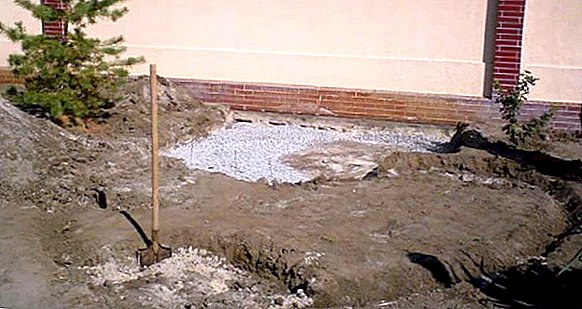
- We dig up a pit, create a drainage from a layer of sand and gravel, ramming.
- We install the finished tank for the pond (or proceed to the next item, if you do waterproofing yourself).
- We cover the foundation pit with a waterproofing film.
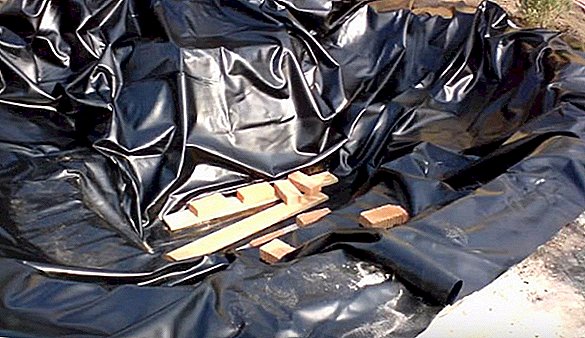
- We collect water to check for leaks.
- Install a cascade or waterfall.
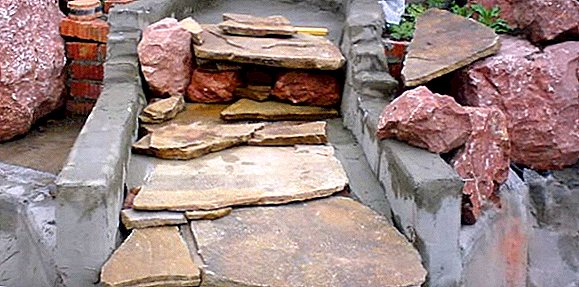
- Install the pump, connect it.
- We decorate a reservoir with plants, pebbles, stones, we launch small fishes.
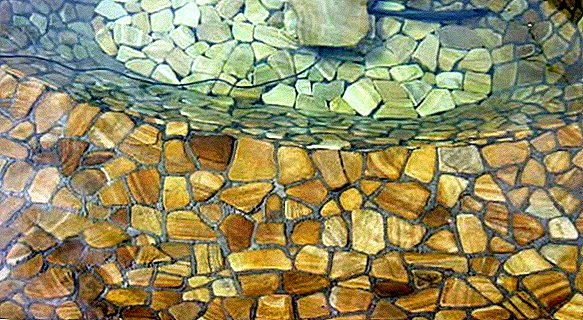
Did you know? If you think that waterfalls - the phenomenon is only terrestrial, you are mistaken! Scientists have found that waterfalls can also form because of the difficult relief of the bottom, temperature drops and salinity of water masses. For example, the largest underwater flow is located in the Danish Bay: its height is 4 km, and its length exceeds 200 km!For a more spectacular view of the pond can be decorated with lights. At night, she will create a game of shadows and waves, will give atmosphere, comfort and fabulousness of the whole structure. An excellent solution would be to install a bench, swing or hammock near the water, where you can relax, relax, dream. As you can see, building a waterfall with your own hands is an absolutely feasible and feasible task for many that can be accomplished over the weekend with all the materials and desires. A decorative pond will turn your garden into a real paradise where you will certainly want to spend more time with family and friends!








